SACRAMENTO (Day 9 - part 3)
The large orientation room offered even more information about the fort and the people who passed through here.


When Sutter first arrived, he said he was a trader. He exchanged beads, cloth and other items for local labor. At first, many worked willingly for him. By aligning with Sutter and the fort, they were protected from the Mexican ranch owners. But unfortunately this eventually turned to force. Sutter would use his militia to attack any villages that wouldn't cooperate. He also took prisoners, including children whom he sometimes gave to the ranchers to use as servants. He even started to round up people from distant tribes as forced laborers.
Why didn't they fight back? Originally the native peoples had a thriving culture with large numbers. By the early 1800s though, European diseases as well as their removal to the missions greatly reduced their numbers. In 1833, up to 75% of the remaining population was wiped out due to a malaria outbreak brought by Hudson Bay trappers. They were still struggling to recover when Sutter arrived in 1839. They felt a friend with a fortress could help protect them from their enemies.
And the Mexican government? They allowed Sutter to build his colony because they thought he might be useful. He had become a Mexican citizen and was keeping the locals in check. But Sutter quietly was purchasing weapons and cannons, and the fort began to look more threatening to the government. His trading post grew into a fortified center of agriculture and industry.
The first overland immigrants from the US arrived in California in 1841. Sutter's fort became a refuge for them, and he gained a workforce, skilled craftsmen and customers to buy his products.
In 1844, there was an uprising against the Mexican governor. In return for more land, Sutter assembled an army of 400 foreign residents and Native Americans to support him. The governor lost, but Sutter was allowed to return to his fort, although he had accumulated substantial debt.
In 1845, the large number of US immigrants began to worry the Mexican government. It tried to order them to leave, but instead they organized a rebellion, declaring California as an independent republic and raised their Bear Flag. It didn't last long for the US annexed the state and began a war with Mexico. Sutter's fort was seized but he was allowed to remain on to manage his garrison. Eventually he regained control after all the fighting ended in 1847.
After Sutter sold the fort in 1849, it was used as a house, hotel, chicken hatchery and even a junkyard. People took its adobe bricks to fill in roads and build new houses. In 1862, heavy floods washed away the ruined walls and only the central building remained. By the 1880s, it had become a romantic ruin.
In 1891, the Native Sons of the Golden West purchased it for $20,000 as a memorial to California pioneers. They gave the property to the state, which reconstructed it. In 1893, it became the state's first historic preservation project. It became part of the California State Park system in 1947. Today's reconstructed fort is over a century old.


Original 1889 reconstruction plans .... Sutter's Mill, where the first gold was discovered that started the California Gold Rush of 1849

The fort in 1867

A young Sutter




The cooper's (or barrelmaker's) shop

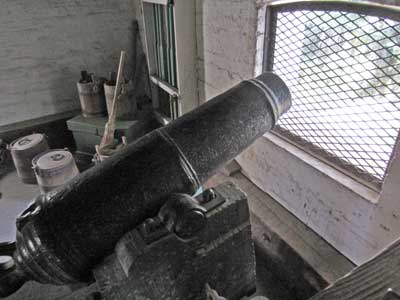
The other bastion
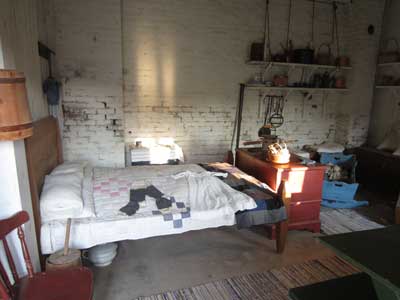

An immigrant's room
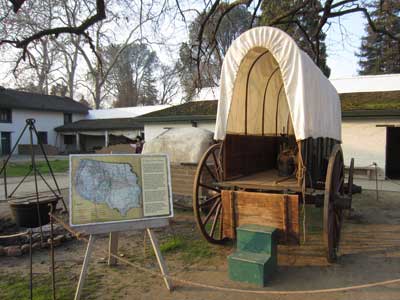

A covered wagon ... any typical fire pit

A panorama of the fort's inner courtyard
During the final rays of the day, we wandered about the historic waterfront district or Old Sacramento.



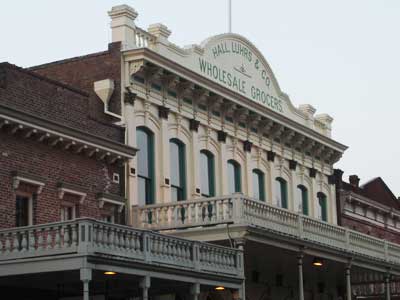

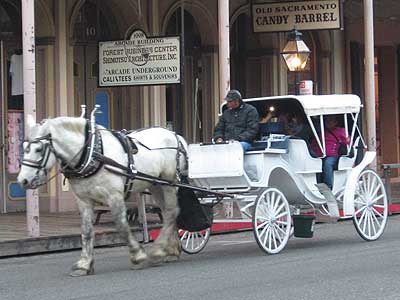
Horse and carriage tours
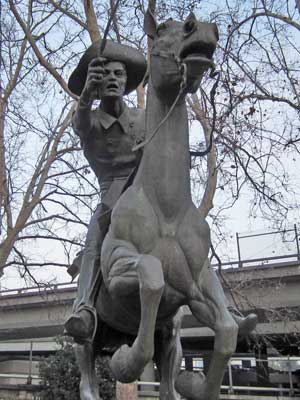

This was the starting station of the Pony Express, which was a mail service that operated from 1860 - 61 between here and Missouri. It took advantage of shorter routes by using mounted riders rather than traditional stagecoaches. .... This monument honors Theodore Judah (1826 - 1863), who helped created the Great Transcontinental Railroad which ran through here.


The old train yard including a roundhouse area




The sun dips behind Tower Bridge, which spans the Sacramento River
return • continue

